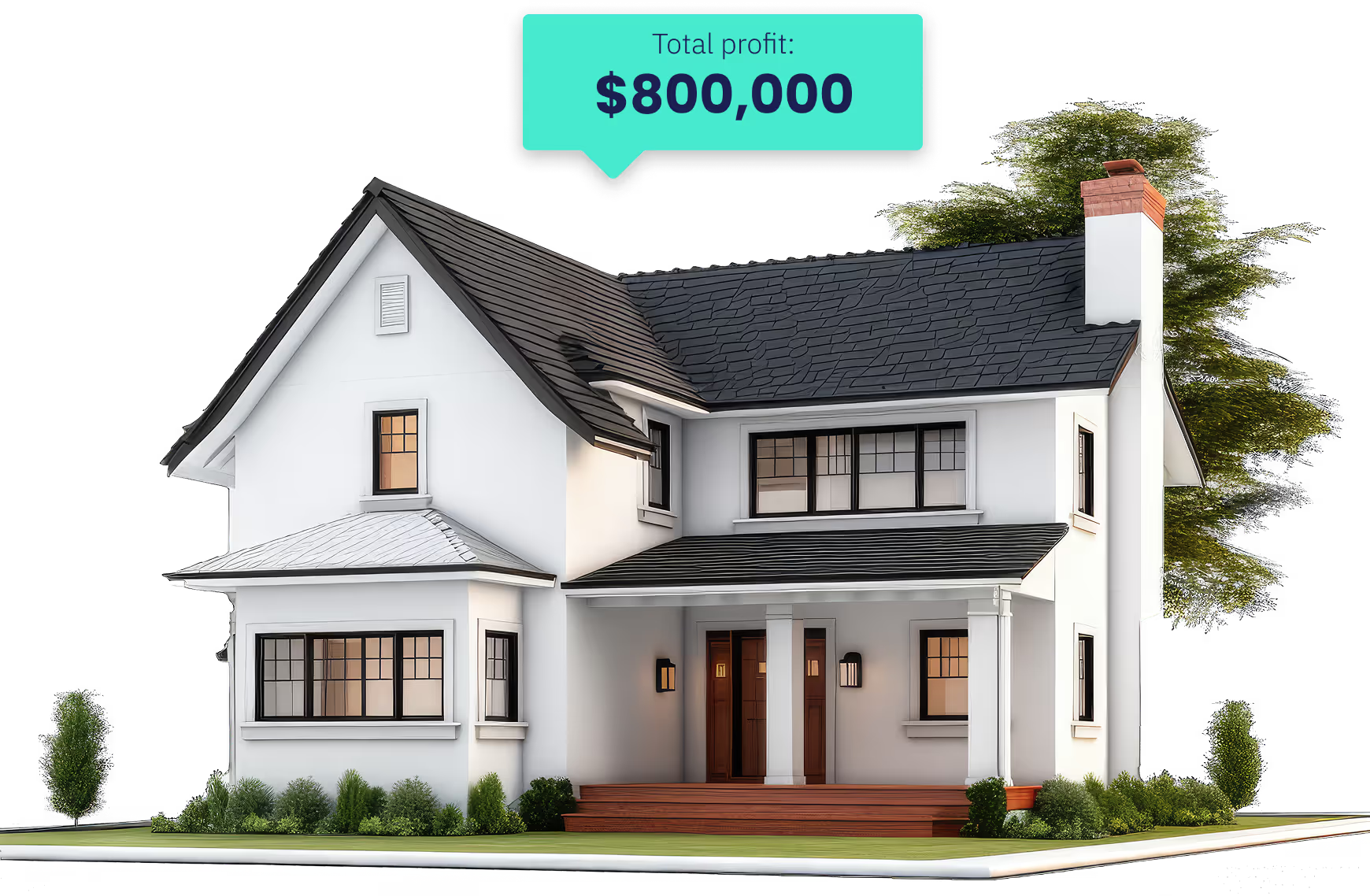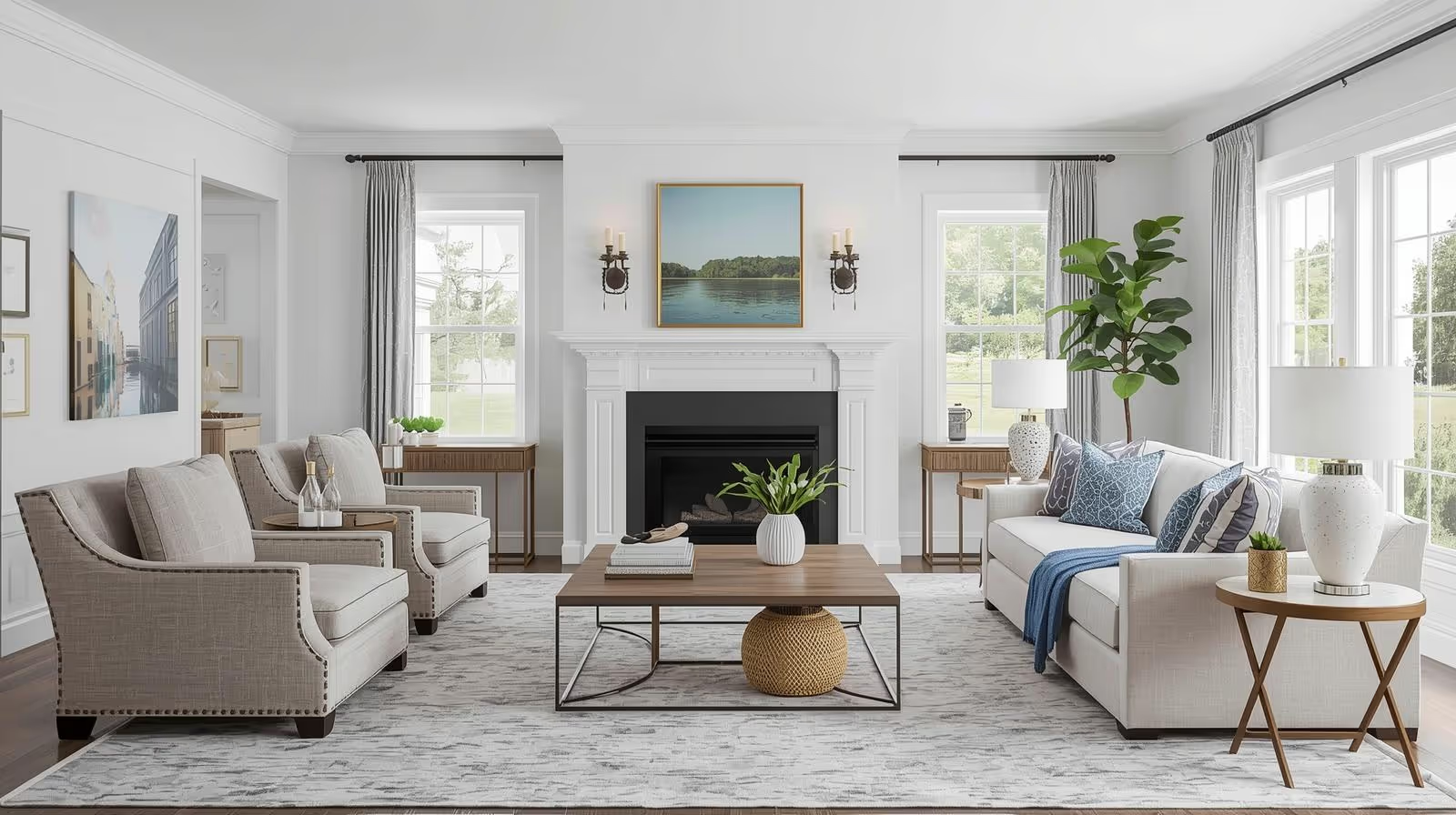Virtual Staging vs. Real Staging: Which is Right for You?

Property sales and home staging, two things that go together like peanut butter and jelly. Not only does staging help highlight a property's strengths and downplay its weaknesses, but it also establishes an inviting ambiance that can captivate a potential buyer's interest.
Thanks to advances in the PropTech space, there are now two primary ways to approach staging a home: virtual staging and traditional staging. This article delves into the differences between these two methods, their advantages and disadvantages, and helps you determine which strategy best aligns with your specific situation.
Insight into Traditional Staging
Traditional staging often involves physically outfitting and embellishing a property to elevate its look and cultivate a warm and inviting setting. This process typically requires bringing in furniture, artwork, and decor items, among other things, to help revamp and liven up the space.
One notable benefit of traditional staging is that it allows prospective buyers to physically engage with the property. They can explore the rooms, grasp the layout nuances, and envision themselves living in the home. This emotional connection can have a big influence on their decision-making during the purchasing journey. Nonetheless, traditional staging also has its drawbacks.
Expenses can pile up, especially if you have to rent or buy furniture and other decorations. The process can be quite time-consuming and challenging logistically, especially when working under tight deadlines or managing multiple properties simultaneously.
Understanding Virtual Staging
On the other hand, virtual staging utilizes digital tools to produce lifelike images of a property enhanced with furnishings and decor. It involves capturing high-quality photos of empty spaces and then digitally incorporating furniture, artwork, and other design elements using specialized software. The key advantage of virtual staging lies in its cost-effectiveness and adaptability. You have the freedom to experiment with various design styles and furniture arrangements without having to cover the costs associated with physical staging.
Virtual staging also comes with a quick turnaround time since the digital enhancements can be completed in just days or even hours. This is particularly a big upside for properties that need a quick listing or those located in areas where physical staging may not be feasible.
However, just like physical staging, virtual staging does come with its own share of constraints. Although digital images can appear highly realistic, they lack the tactile experience offered by physical staging. Buyers might struggle to form an emotional connection with a property solely based on virtual representations. There is also the concern that certain buyers might view virtual staging as deceptive, especially if the digital enhancements significantly differ from the actual space.
Cost Comparison
Regarding expenses, real staging is typically more costly than virtual staging. The costs of real staging may involve furniture rental or purchase, transportation, installation, and removal. These expenses can add up fast, especially when dealing with a bigger property or the need to stage multiple rooms.
On the other hand, virtual staging tends to be more budget-friendly. Many virtual staging services charge a fixed fee per room, usually ranging from $50 to $200. This fee covers the digital enhancement of the space, and additional revisions or alterations can often be requested without extra charges.
Impact on Home Sales
Research shows that staged homes generally sell faster and for higher prices compared to unstaged properties. A 2021 report by the National Association of Realtors (NAR) found that 82% of buyers' agents said staging made it easier for their clients to visualize the property as a future home. The same report also revealed that 23% of buyer's agents said that home staging raised the dollar value offered between 1% and 5%, compared to similar homes that were not staged.
The impact of virtual staging versus real staging on attracting offers can vary based on the target market and buyer preferences. A 2019 survey by the Real Estate Staging Association (RESA) found that 80% of potential buyers were more likely to visit a property they saw online if it was staged.
Nevertheless, the impact of virtual staging versus real staging on attracting offers can vary based on the target market and buyer preferences. Some buyers may value the tangible experience provided by real staging and find it easier to imagine themselves residing in the space. Others may prefer virtual staging, especially if they are tech-savvy and appreciate its flexibility.
When to Opt for Physical Staging
Physical staging is often the preferred route in empty properties where the rooms lack a clear purpose or charm. It can be particularly impactful for upscale or luxury properties, where buyers anticipate a certain level of elegance and attention to detail. Physical staging may also be more appropriate for properties with distinctive or complex layouts, as it enables buyers to physically explore the space and grasp how furniture can be arranged to optimize its potential.
When to Opt for Virtual Staging
Virtual staging is a great choice for properties that are currently in use or have existing furniture that doesn't effectively highlight the space. It's also a practical option for properties situated in locations where physical staging may pose logistical challenges or be cost-prohibitive.
Additionally, virtual staging can serve as a valuable tool for properties requiring a quick listing, as digital enhancements can be completed within days, expediting the property's market debut.
Blending Both Staging Approaches
In certain scenarios, employing a hybrid strategy that combines virtual and physical staging methods can yield big results.
For instance, you might opt to physically set up the primary living spaces, like the living room and main bedroom, in person, while utilizing virtual staging for secondary areas such as guest rooms or home offices. This method lets you establish a strong emotional bond with buyers through the physical staging of rooms while also taking advantage of the cost-effectiveness and flexibility of virtual staging in other parts of the property. Ultimately, choosing between virtual and real staging depends on your specific requirements, budget limitations, and target audience.
Each approach has its pros and cons that need careful consideration before deciding which one to go with. Real staging provides a tangible experience that can forge a deep emotional connection with buyers but involves higher expenses and logistical hurdles. On the contrary, virtual staging is budget-friendly, adaptable and offers quick results; however, it may not evoke the same level of emotional attachment as real staging does.
By understanding the difference between these two staging techniques and taking into account your property's unique features and target demographic, you can make an educated choice that not only enhances your home's appeal but effectively draws in potential buyers.
Recent articles
Unlocking equity is hard,
we've got your back.
See what's possible, it's your real estate.
Discuss homeThe future
starts at home.
While there is an abundance of evidence that supports that renovated turnkey homes sell faster and for more, Revive, nor the Contractor, can guarantee a specific as-is or after renovation value or the exact time that it would take to get a renovated home sold. Further, Revive cannot provide a guarantee that the real estate market will not experience fluctuations or a decrease during the renovation or sales period.








